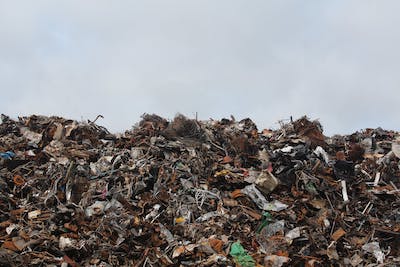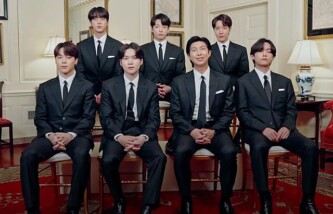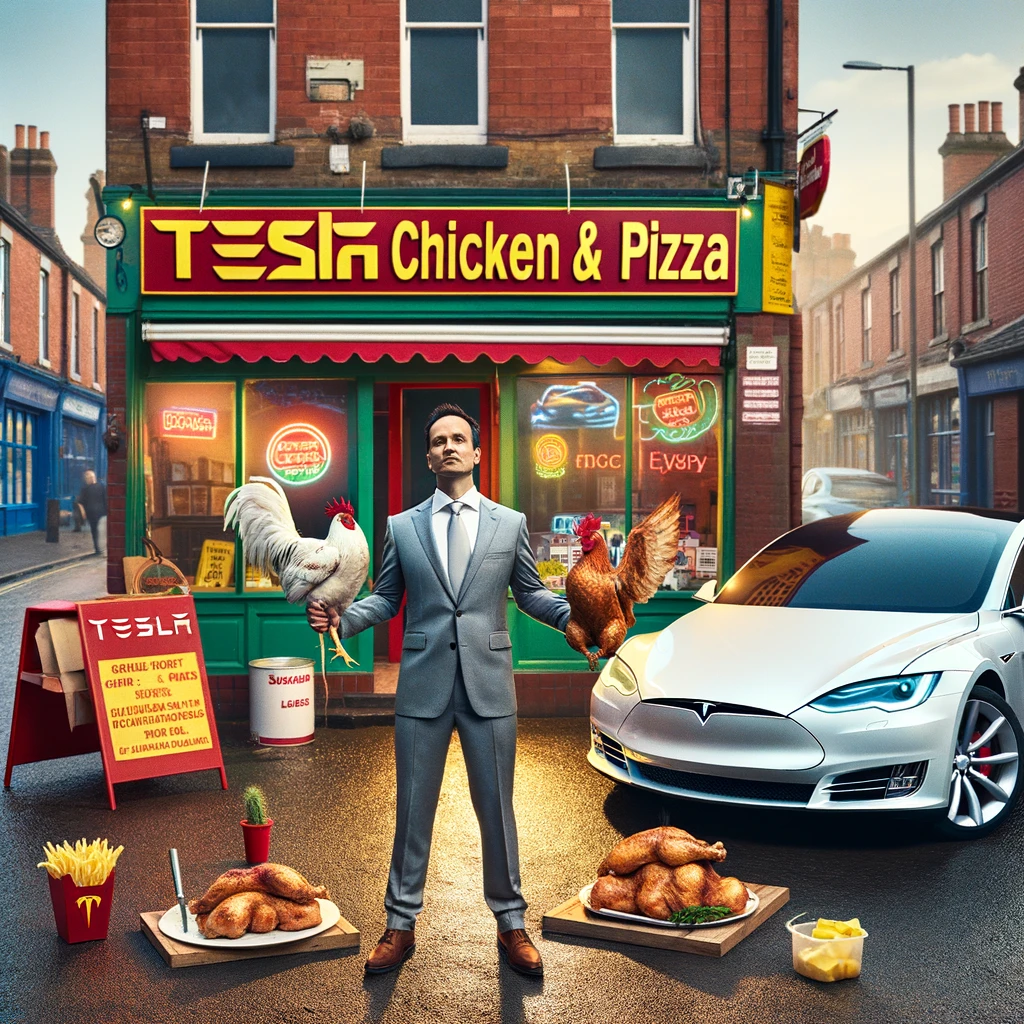According to research conducted by Material Focus, nearly half a billion small electrical items, known as “Fast Tech,” were thrown away in the UK last year. These items include cables, lights, mini fans, and disposable vapes. They are considered the fastest-growing type of electronic waste. The research also revealed that the average home has 30 unused electrical items that are not being used. These items contain valuable raw materials that can be recycled.
Material Focus, a not-for-profit group, commissioned a survey of 2000 people to gather this data. The survey found that the average cost of these “Fast Tech” items is £4, which encourages consumers to see them as disposable. However, they contain valuable materials such as copper wires and lithium batteries that can be recovered through recycling. Scott Butler, the executive director of Material Focus, emphasized the importance of recycling these items and raising awareness that anything with a plug, battery, or cable can be recycled.
This issue is not limited to the UK; it is a global problem. Worldwide, consumers throw away 9 billion kg of electronic waste each year, including cables, toys, vapes, and novelty clothes. Many people do not recognize these items as e-waste. However, recycling rates have been increasing, and 60% of people now say they recycle their electricals. Despite this progress, many individuals still have unused electrical items gathering dust in their homes.
Nadiya Catel-Arutyunova, a sustainability adviser at the British Retail Consortium, stated that all retailers selling electricals are required to help customers dispose of their old products, regardless of where they were originally purchased. Material Focus’s research also showed a decrease in electrical waste since 2017, partly due to lighter electrical items and higher recycling rates.
To recycle electricals, they can be sold, donated, repaired, or recycled. Recycling centers, libraries, and other locations accept old electricals for collection. Some councils even offer door-to-door collection services. Retailers are obligated to assist customers in disposing of old electricals, even if they did not sell them initially. The Recycle Your Electricals website provides a guide to local recycling facilities. Material Focus is a not-for-profit organization that promotes recycling and is funded by fees paid by electrical producers when they do not meet government recycling targets.
Original news source: Nearly half a billion small tech items thrown away (BBC)
Listen
Slow
Normal
Fast
Group or Classroom Activities
Warm-up Activities:
– Headline Creation
Instructions: Divide the class into small groups. Give each group a few minutes to come up with a catchy headline for the article. Encourage them to be creative and use their knowledge of vocabulary and grammar to make an attention-grabbing headline. Afterward, have each group share their headline and explain why they chose it.
– Opinion Poll
Instructions: Have the class break into pairs or small groups. Ask them to discuss their opinions on the issue of electronic waste and recycling. Have them come up with a list of questions to ask their classmates, such as “Do you recycle your old electronic items?” or “What do you do with electronic items you no longer use?” Afterward, have each group share their findings with the rest of the class.
– Pros and Cons
Instructions: Divide the class into two groups. Assign one group to come up with a list of pros for recycling electronic waste, and the other group to come up with a list of cons. Give them a few minutes to brainstorm and then have each group share their lists with the class. Encourage discussion and debate on the points raised.
– Mind Map
Instructions: Provide each student with a blank piece of paper. Ask them to create a mind map of the different aspects of electronic waste and recycling discussed in the article. They can include subtopics, key points, and any other relevant information. Afterward, have students share and compare their mind maps in pairs or small groups.
– Future Predictions
Instructions: Ask the students to imagine what the future of electronic waste and recycling will look like. Have them write a short paragraph or make a list of their predictions, based on the information in the article and their own knowledge and opinions. Encourage them to think critically and consider the potential challenges and solutions. Afterward, have students share their predictions with the class and discuss their reasoning.
Comprehension Questions:
1. What are some examples of “Fast Tech” items mentioned in the article?
2. How many unused electrical items does the average home have, according to the research?
3. What are some valuable materials that can be recovered from these “Fast Tech” items?
4. What is the average cost of “Fast Tech” items?
5. What is the global amount of electronic waste thrown away by consumers each year?
6. What percentage of people say they recycle their electricals?
7. What are some ways in which electricals can be recycled?
8. How is Material Focus funded?
Go to answers ⇩
Listen and Fill in the Gaps:
According to (1)______ conducted by Material Focus, nearly half a billion small electrical (2)______, (3)______ as “Fast Tech,” were thrown away in the UK last year. These items include cables, lights, mini fans, and disposable vapes. They are (4)______ the fastest-growing type of electronic waste. The research also revealed that the average home has 30 unused electrical items that are not being used. These items contain valuable raw materials that can be recycled.
Material Focus, a not-for-profit group, commissioned a survey of 2000 people to gather this data. The survey found that the average cost of these “Fast Tech” items is £4, which (5)______ consumers to see them as disposable. However, they contain valuable materials such as copper wires and lithium batteries that can be recovered through recycling. (6)______ Butler, the executive director of Material (7)______, (8)______ the importance of recycling these items and raising awareness that anything with a plug, battery, or cable can be recycled.
This issue is not limited to the UK; it is a global problem. Worldwide, consumers throw away 9 billion kg of electronic waste each year, including cables, toys, vapes, and novelty clothes. Many people do not recognize these items as e-waste. However, recycling rates have been increasing, and 60% of people now say they recycle their (9)______s. Despite this progress, many (10)______ still have unused electrical items (11)______ dust in their homes.
Nadiya Catel-Arutyunova, a sustainability adviser at the British Retail Consortium, stated that all retailers selling electricals are required to help customers dispose of their old (12)______, regardless of where they were originally purchased. Material Focus’s research also showed a decrease in electrical waste since 2017, partly due to lighter electrical items and higher recycling rates.
To recycle electricals, they can be sold, donated, repaired, or recycled. Recycling centers, libraries, and other locations accept old electricals for collection. Some councils even offer door-to-door collection (13)______. Retailers are (14)______ to assist customers in disposing of old electricals, even if they did not sell them initially. The (15)______ Your Electricals website provides a (16)______ to local recycling facilities. Material Focus is a not-for-profit organization that promotes recycling and is funded by fees paid by electrical producers when they do not meet government recycling targets.
Go to answers ⇩
Discussion Questions:
Students can ask a partner these questions, or discuss them as a group.
1. What is your opinion on the amount of electronic waste being thrown away each year?
2. How would you feel if you found out that you had 30 unused electrical items in your home?
3. Do you think it is important for consumers to be aware of the valuable materials that can be recycled from “Fast Tech” items? Why or why not?
4. How do you personally dispose of your old electrical items? Do you sell, donate, repair, or recycle them?
5. What steps do you think could be taken to reduce the amount of electronic waste being generated each year?
6. Have you ever recycled an electrical item before? If so, what was your experience like?
7. How do you feel about the fact that many people do not recognize certain items as e-waste and therefore do not recycle them?
8. Do you think retailers should be obligated to help customers dispose of their old electrical products, regardless of where they were originally purchased? Why or why not?
9. What are some ways that you could raise awareness about the importance of recycling electrical items in your community?
10. How do you think recycling rates could be further increased?
11. Do you think the average cost of “Fast Tech” items being £4 encourages consumers to see them as disposable? Why or why not?
12. How important is it for individuals to take responsibility for properly disposing of their old electrical items?
13. Have you ever had an experience where you were unable to dispose of an old electrical item properly? If so, what happened?
14. Do you think government recycling targets are an effective way to promote recycling? Why or why not?
15. What are some ways that individuals can encourage others to recycle their electrical items?
Individual Activities
Vocabulary Meanings:
Match each word to its meaning.
Words:
1. small
2. electrical
3. valuable
4. recycling
5. waste
6. items
7. average
8. consumers
Meanings:
(a) The opposite of big
(b) Material that is discarded or no longer needed
(c) The process of converting waste materials into reusable materials
(d) People who buy and use products or services
(e) The typical or usual amount or level
(f) Having worth or importance
(g) Relating to electricity or electronics
(h) Things or objects
Go to answers ⇩
Multiple Choice Questions:
1. According to research conducted by Material Focus, what type of electronic waste is considered the fastest-growing?
(a) Cables
(b) Lights
(c) Mini fans
(d) Fast Tech
2. How many unused electrical items does the average home in the UK have?
(a) 10
(b) 30
(c) 50
(d) 20
3. What valuable materials can be recovered through recycling “Fast Tech” items?
(a) Plastic and glass
(b) Aluminum and steel
(c) Copper wires and lithium batteries
(d) Paper and cardboard
4. How much does the average “Fast Tech” item cost?
(a) £10
(b) £2
(c) £4
(d) £6
5. How much electronic waste do consumers throw away worldwide each year?
(a) 9 billion kg
(b) 1 billion kg
(c) 5 billion kg
(d) 10 billion kg
6. What percentage of people now say they recycle their electricals?
(a) 60%
(b) 40%
(c) 80%
(d) 20%
7. What is the role of retailers in helping customers dispose of old electrical products?
(a) They are not obligated to help customers dispose of old products.
(b) They can choose whether or not to help customers dispose of old products.
(c) They are only required to help customers if they sold the products initially.
(d) They are required to assist customers regardless of where the products were purchased.
8. How is Material Focus funded?
(a) By government grants.
(b) By fees paid by electrical producers when they do not meet government recycling targets.
(c) By donations from individuals.
(d) By selling recycled materials.
Go to answers ⇩
True or False Questions:
1. Material Focus conducted research that found less than half a billion small electrical items were thrown away in the UK last year.
2. Recycling rates for electrical items have been increasing, with 60% of people now saying they recycle their electricals.
3. These items contain valuable materials such as copper wires and lithium batteries that can be recycled.
4. The average cost of these “Fast Tech” items is £4, which discourages consumers to see them as disposable.
5. The average home in the UK has 30 unused electrical items that are not being used.
6. “Fast Tech” items are not considered the fastest-growing type of electronic waste.
7. Worldwide, consumers throw away less than 9 billion kg of electronic waste each year, including cables, toys, vapes, and novelty clothes.
8. These small electrical items, known as “Fast Tech,” include cables, lights, mini fans, and disposable vapes.
Go to answers ⇩
Write a Summary:
Write a summary of this news article in two sentences.
Check your writing now with the best free AI for English writing!
Writing Questions:
Answer the following questions. Write as much as you can for each answer.
Check your answers with our free English writing assistant!
1. What is the fastest-growing type of electronic waste in the UK?
2. How many unused electrical items does the average home in the UK have?
3. What valuable materials can be recovered through recycling “Fast Tech” items?
4. How much electronic waste is thrown away globally each year?
5. How can people dispose of their old electrical items in the UK?
Answers
Comprehension Question Answers:
1. What are some examples of “Fast Tech” items mentioned in the article?
– Cables, lights, mini fans, and disposable vapes.
2. How many unused electrical items does the average home have, according to the research?
– The average home has 30 unused electrical items.
3. What are some valuable materials that can be recovered from these “Fast Tech” items?
– Valuable materials include copper wires and lithium batteries.
4. What is the average cost of “Fast Tech” items?
– The average cost of “Fast Tech” items is £4.
5. What is the global amount of electronic waste thrown away by consumers each year?
– Worldwide, consumers throw away 9 billion kg of electronic waste each year.
6. What percentage of people say they recycle their electricals?
– 60% of people say they recycle their electricals.
7. What are some ways in which electricals can be recycled?
– Electricals can be sold, donated, repaired, or recycled at recycling centers or through door-to-door collection services.
8. How is Material Focus funded?
– Material Focus is funded by fees paid by electrical producers when they do not meet government recycling targets.
Go back to questions ⇧
Listen and Fill in the Gaps Answers:
(1) research
(2) items
(3) known
(4) considered
(5) encourages
(6) Scott
(7) Focus
(8) emphasized
(9) electrical
(10) individuals
(11) gathering
(12) products
(13) services
(14) obligated
(15) Recycle
(16) guide
Go back to questions ⇧
Vocabulary Meanings Answers:
1. small
Answer: (a) The opposite of big
2. electrical
Answer: (g) Relating to electricity or electronics
3. valuable
Answer: (f) Having worth or importance
4. recycling
Answer: (c) The process of converting waste materials into reusable materials
5. waste
Answer: (b) Material that is discarded or no longer needed
6. items
Answer: (h) Things or objects
7. average
Answer: (e) The typical or usual amount or level
8. consumers
Answer: (d) People who buy and use products or services
Go back to questions ⇧
Multiple Choice Answers:
1. According to research conducted by Material Focus, what type of electronic waste is considered the fastest-growing?
Answer: (d) Fast Tech
2. How many unused electrical items does the average home in the UK have?
Answer: (b) 30
3. What valuable materials can be recovered through recycling “Fast Tech” items?
Answer: (c) Copper wires and lithium batteries
4. How much does the average “Fast Tech” item cost?
Answer: (c) £4
5. How much electronic waste do consumers throw away worldwide each year?
Answer: (a) 9 billion kg
6. What percentage of people now say they recycle their electricals?
Answer: (a) 60%
7. What is the role of retailers in helping customers dispose of old electrical products?
Answer: (d) They are required to assist customers regardless of where the products were purchased.
8. How is Material Focus funded?
Answer: (b) By fees paid by electrical producers when they do not meet government recycling targets.
Go back to questions ⇧
True or False Answers:
1. Material Focus conducted research that found less than half a billion small electrical items were thrown away in the UK last year. (Answer: False)
2. Recycling rates for electrical items have been increasing, with 60% of people now saying they recycle their electricals. (Answer: True)
3. These items contain valuable materials such as copper wires and lithium batteries that can be recycled. (Answer: True)
4. The average cost of these “Fast Tech” items is £4, which discourages consumers to see them as disposable. (Answer: False)
5. The average home in the UK has 30 unused electrical items that are not being used. (Answer: True)
6. “Fast Tech” items are not considered the fastest-growing type of electronic waste. (Answer: False)
7. Worldwide, consumers throw away less than 9 billion kg of electronic waste each year, including cables, toys, vapes, and novelty clothes. (Answer: False)
8. These small electrical items, known as “Fast Tech,” include cables, lights, mini fans, and disposable vapes. (Answer: True)
Go back to questions ⇧













